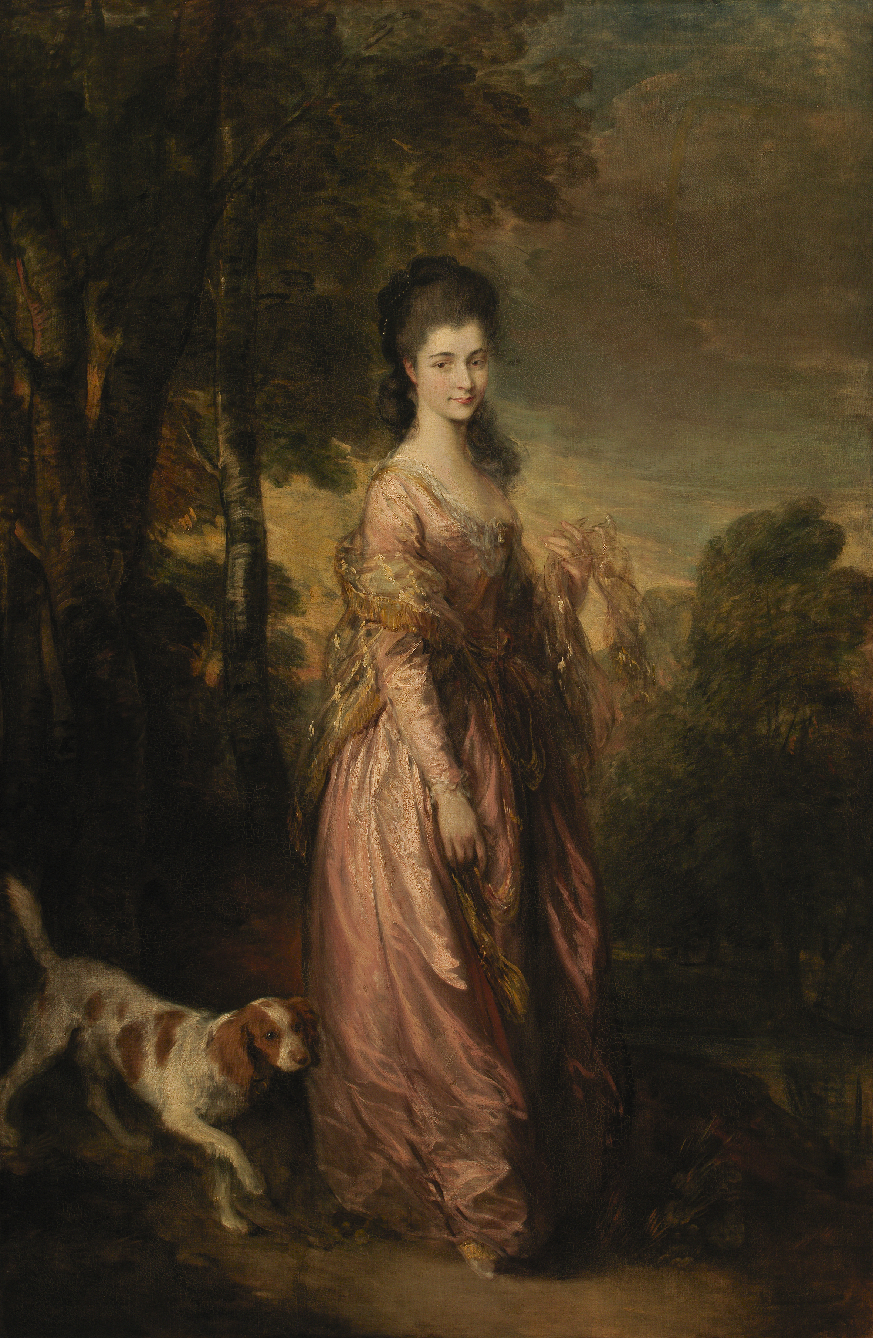
- England, c. 1775
- Oil on canvas
- Inv. 429
Portrait of Mrs Lowndes-Stone
This painting was almost certainly created to mark the marriage of Elisabeth Garth to her cousin, William Lowndes-Stone, on 15 July 1775. The composition broadly follows the conventions of the sophisticated type of full-body portrait introduced to England by Van Dyck in the 1630s, when the master was the official painter to the court of Charles I.
The elongated figure wears a salmon-coloured silk dress and a transparent gauze shawl finished off by gold trimming. She is shown au naturel, on foot and framed by the landscape, in a manner that greatly appealed to local tastes. There is no opposition between the sophisticated style of the portrait and the model’s informal pose and captivating sense of freshness. On the contrary, the piece retains the spontaneity that characterises the painter’s best work in the genre.
Although the painting bears some similarities to other representations of women made by the artist in the same period, it stands out for its unrivalled refinement. For this reason, it has rightly been considered as one of the most beautiful portraits ever painted by Thomas Gainsborough, who was commonly believed to be the ‘ideal interpreter of the English woman’.
Catherine Charlotte Lowndes-Stone Norton; Baron Alfred Charles de Rothschild; Almina, countess of Carnavon. Acquired by Calouste Gulbenkian from Duveen, London, 15 November 1923.
H. 232 cm; W. 153 cm
Washington D. C. 1950
European Paintings from the Gulbenkian Collection, exhibition catalogue. Washington D. C.: National Gallery of Art, 1950, pp. 34–5, cat. 12.
Waterhouse 1958
Ellis Waterhouse. Gainsborough. London: E. Hulton, 1958, pp. 26, 79, no. 459.
Sampaio 2009
Luísa Sampaio, Painting in the Calouste Gulbenkian Museum. Lisbon/Milan: Calouste Gulbenkian Museum/Skira, 2009, p. 112, cat. 46.
Lisbon 2011
Calouste Gulbenkian Museum. Lisbon: Calouste Gulbenkian Museum 2011, p. 158, cat. 134.